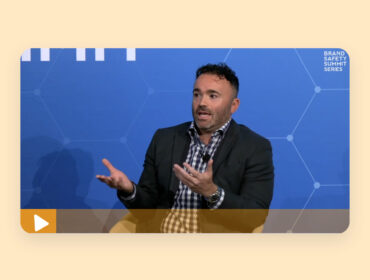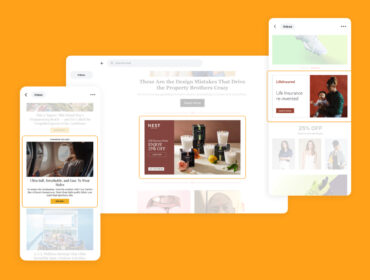Real Time Banter: Examining the tectonic shifts in the programmatic landscape
In our latest Real Time Banter episode, Helene Parker, founder and chief programmatic sensei of Helene Parker Consulting, proposes a drinking game: whether you’ve got coffee, tea, or another beverage of your choice, take a sip each time she says “testing.”
That’s because — with the upcoming deprecation of third-party cookies and major changes in the programmatic marketing landscape — testing will be crucial to survival.
“I’ve been in the industry for 10 years now, but I don’t remember something like this happening in a very long time or ever,” says Parker. “Nobody has a clear direction or solution to this. So what’s the best thing to do? Test.”
To help brands prepare for this tectonic shift, Parker, who also hosts her Programmatic Digest podcast, shared her insights about programmatic media buying, email newsletter marketing, and personalization in a cookieless world.
What are some of the biggest changes in media buying?
Marketers should pay attention to four major changes and growth areas in programmatic media buying:
- Mobile advertising
- The deprecation of third-party cookies
- CTV
- Audio advertising
CTV, in particular, has greatly expanded in the last 20 months as a result of the pandemic. And consumers are also flocking to one-on-one content formats like podcasts.
“Spotify is doing big things,” says Parker. “So I think the whole world of audio advertising is going to continually increase and we’re looking forward to that.”
How has education about programmatic changed?
Parker hopes to see more marketers normalize education in programmatic. And this doesn’t just mean training employees to use DSPs. It also means training them to use that DSP data to better understand their audiences and build effective strategies.
“Just because you know how to run a DSP doesn’t mean that you know how to look at the strategy, think about a different perspective, or look at the data in a certain way,” Parker says. “That’s the missing piece.”
How can advertisers leverage growing channels to engage audiences?
To truly understand and engage their audiences, marketers have to collect customer data across channels and, of course, test new strategies.
“Invest in research tools, invest in technology that allows you to track, measure, and capture where they’re consuming the most media,” Parker says. “And then based on that, you pull your strategy.”
It’s also important to give each strategy time to prove its effectiveness before pulling the plug or moving onto a different idea.
“Make sure you give at least 90 days,” Parker says. “Give some time for the engine to make its magic happen.”
Email newsletters have enjoyed a resurgence in the last few years, giving consumers that one-to-one, curated content experience they crave.
“From a personal perspective, I think it’s information overload out there,” Parker says. “There’s so much going on, and emails [have] a personal touch.”
Marketers can also use email to reach consumers at just the right time and frequency.
“I have top five newsletters that I follow, including LiveIntent,” Parker says. “Because I know that it’s digestible information that I can get to when I want to get to it.”
Yes, Google pushed off its third-party deprecation to 2023. But that doesn’t mean advertisers can sit back and wait. They must use this time to start building their first-party data strategies and identity solutions.
“You will probably have to test 10 to 20 identity solutions at once until you find one, and then test them some more,” Parker says. “And then tell others how you did it so that we can, as a community, come together and find a solution that everybody can use.”
“Ultimately, advertising is funding the open internet,” Parker says. “Consumers don’t want advertising to go, they just want the message to be more relevant to them.”
To personalize effectively, however, advertisers need to remember one key ingredient: consent.
“Be ahead of the game; make sure that you’re compliant,” Parker says. “If you’re talking about personalization, that needs to be done correctly and that needs to be done with the consent of the consumer. And then once you’re there, make sure that your creative is on point.”
Why is retail media so effective for marketers?
Retail media networks have provided brands with valuable opportunities to reach massive audiences and make purchasing more convenient and intuitive.
“The retail media space has done a great job because, again, going back to understanding their consumers, understanding the reach that they have, they were able to use their platform to the fullest and they got really creative,” Parker says. “I think the retail media industry is going to push some of those technologies to become even more creative. And brands are going to have to catch up to it.”
What’s overrated and underrated in programmatic advertising?
Google and Facebook are overrated, according to Parker, because of their walled gardens and the control they exert over marketers’ data. As she put it, “I think we’ve been giving them more power than they should have from any perspective.”
As for what’s underrated, Parker points to one of her favorite content formats: podcasts.
“I don’t think brands fully understand the reach and awareness that come with the podcasting world,” Parker says. “Projecting into the next one to two years, it’s going to boom. It’s going to be really sexy like CTV is right now to some brands.”


